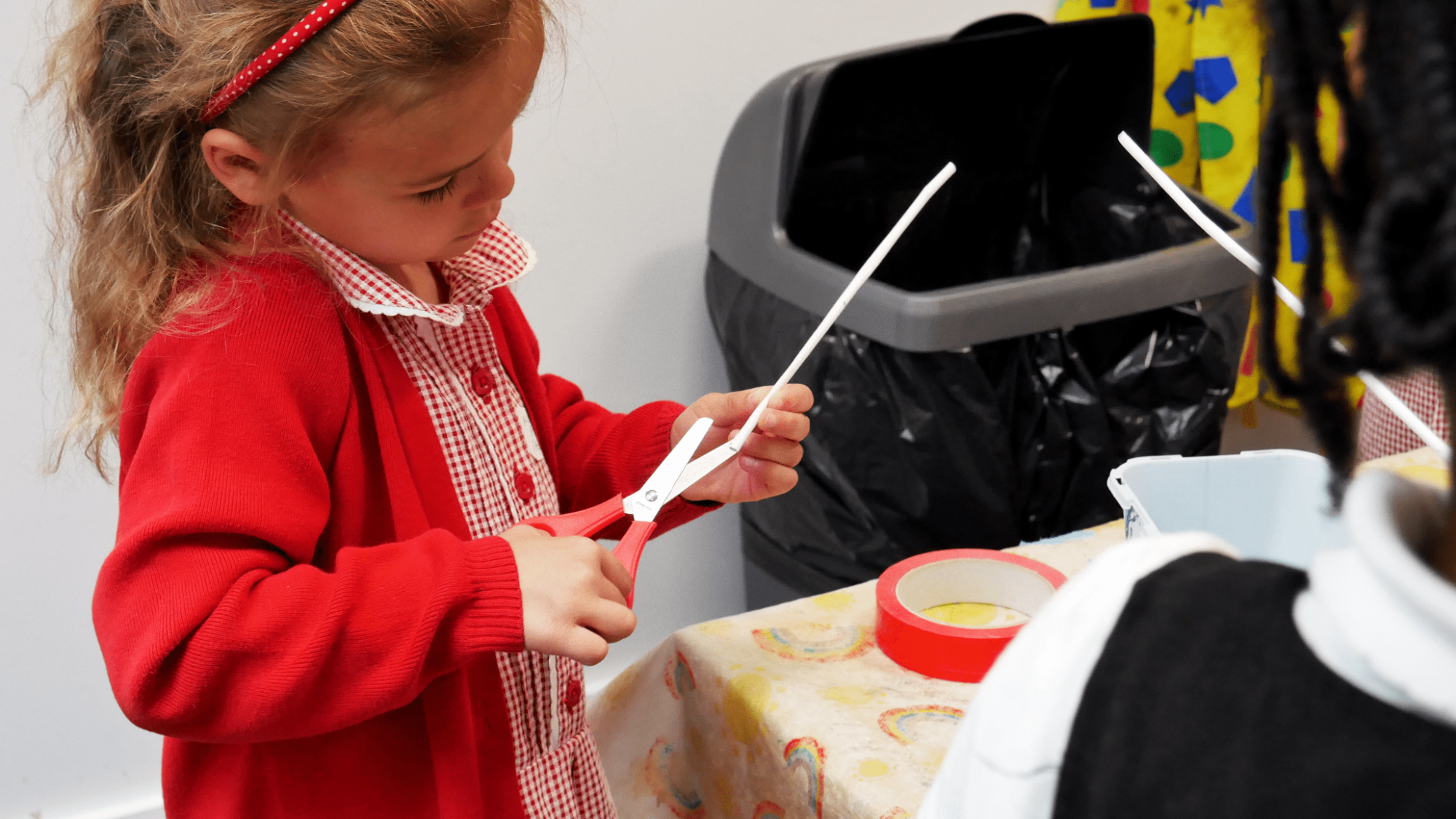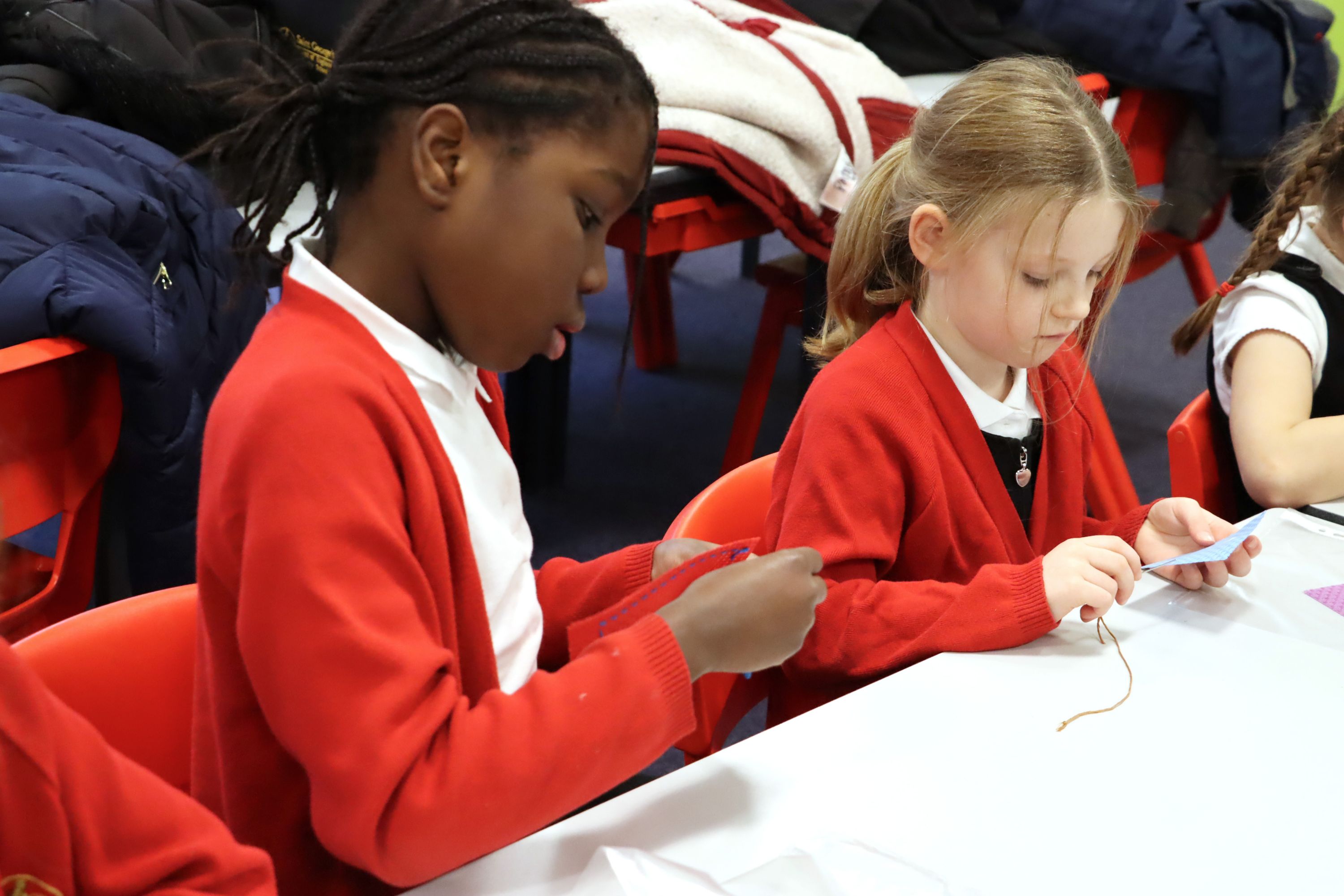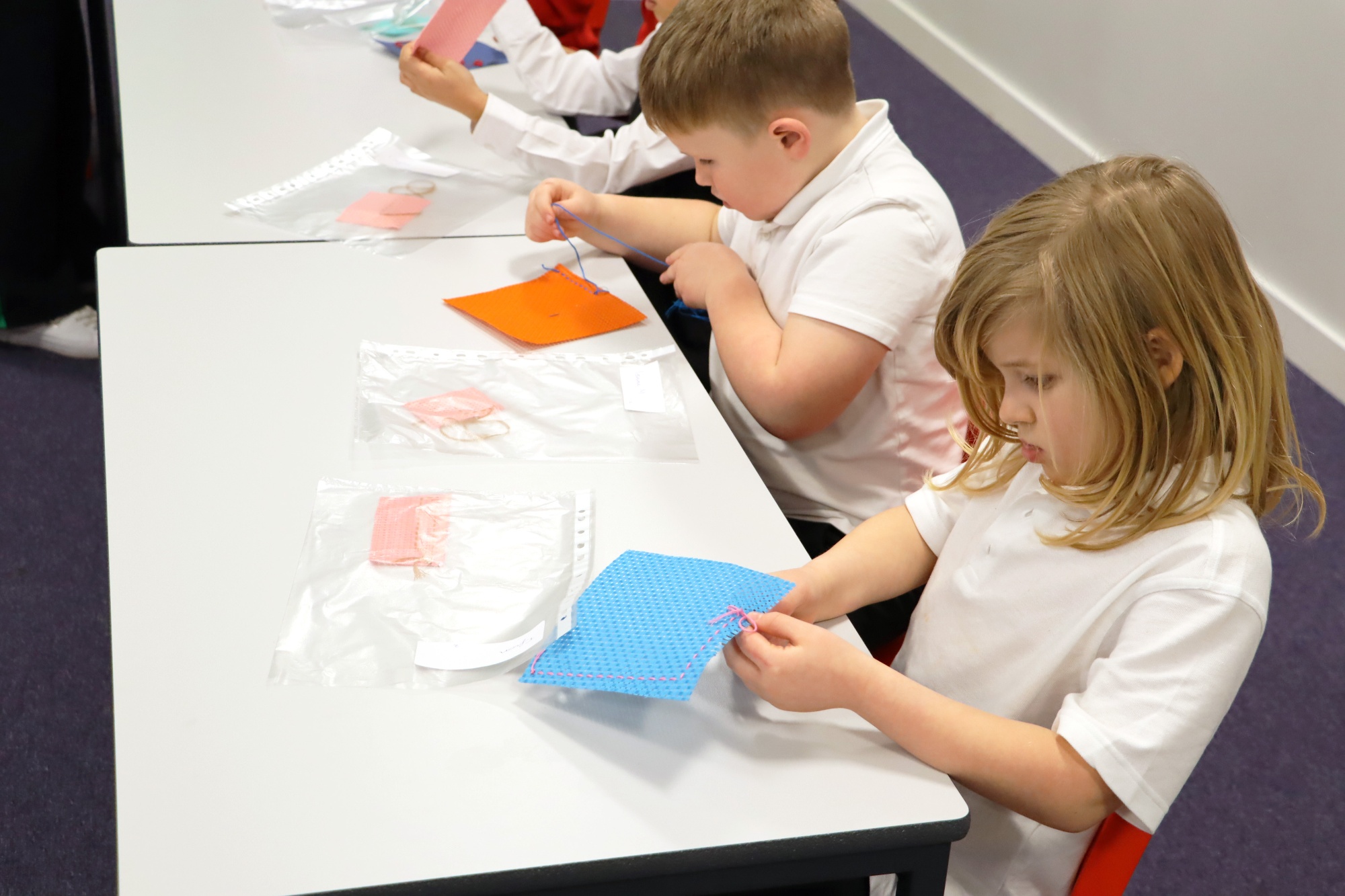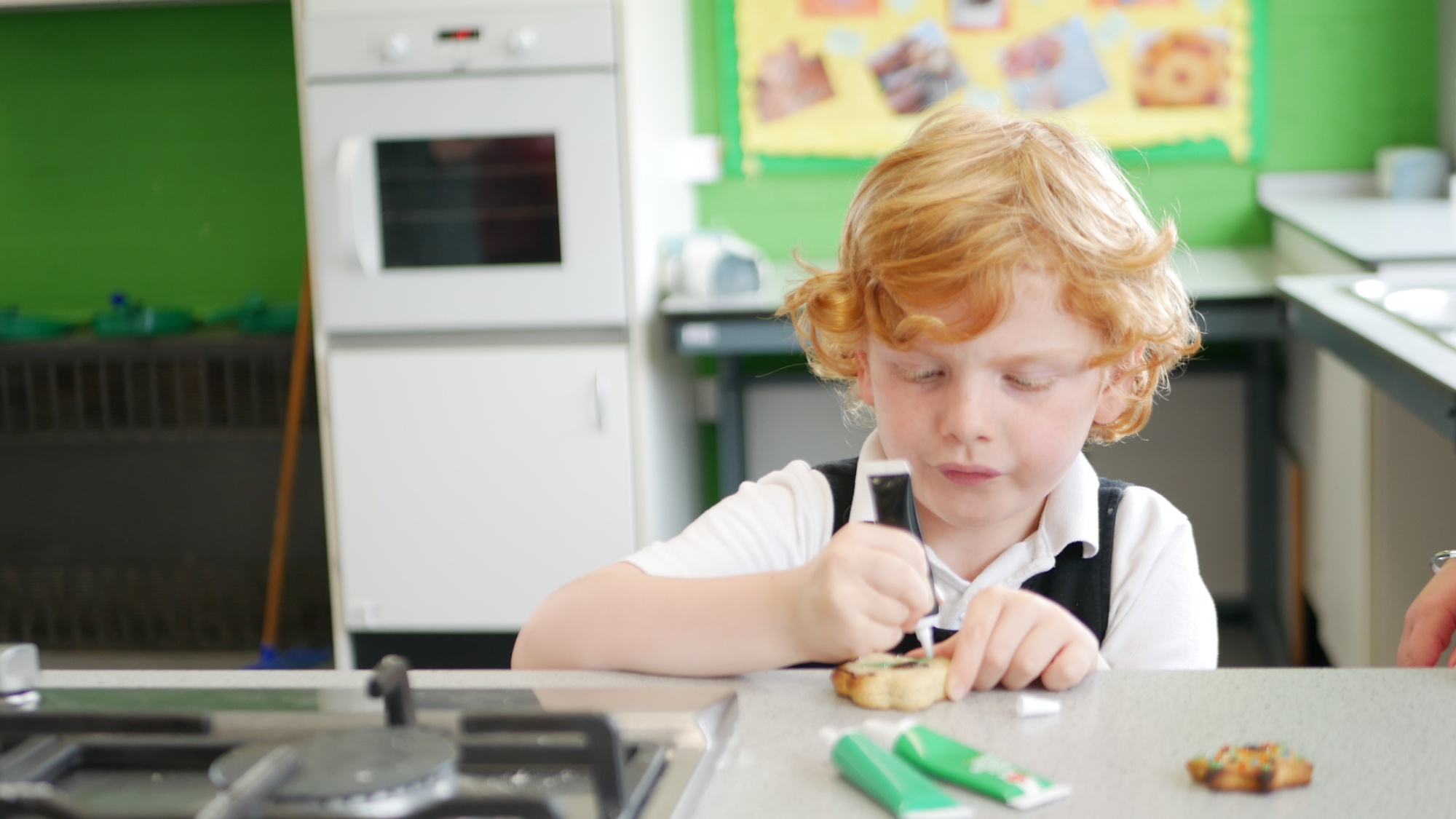Design & Technology
Subject Leader: Mrs C Brodie - brodiec@saintgeorgescofe.kent.sch.uk
Design & Technology prepares children to deal with tomorrow’s rapidly changing world. It encourages children to become independent, creative problem-solvers and think as individuals and as part of a team – making positive changes to their quality of life. It enables them to identify needs and opportunities and to respond to them by developing a range of ideas and by making products and systems. Through the study of Design & Technology, children combine practical skills with an understanding of aesthetic, social and environmental issues, as well as functions and industrial practises. This allows them to reflect on and evaluate present and past design & technology assessing its use and impact on the world. Design & Technology helps all children to become astute and informed future consumers and potential innovators.
Intent
Design and Technology is an inspiring, rigorous, and practical subjects. Design and Technology encourage children to learn to think and intervene creatively to solve problems both as individuals and as members of a team. At Saint George’s Primary Phase, we encourage children to use their creativity and imagination, to design and make products that solve real and relevant problems within a variety of contexts, considering their own and others’ needs, wants and values. We aim to, wherever possible, link work to other disciplines such as mathematics, science, the humanities, computing, and art. The children are also given opportunities to reflect upon and evaluate past and present design technology, its uses and its effectiveness and are encouraged to become innovators and risk-takers.

Implementation
Through a variety of creative and practical activities, we teach the knowledge, understanding and skills needed to engage in an iterative process of designing and making. The children work in a range of relevant contexts (for example home, school, leisure, culture, industry, and the wider environment).
When designing and making, the children are taught to:
Design
- use research and develop design criteria to inform the design of innovative, functional, appealing products that are fit for purpose, aimed at particular individuals or groups
- generate, develop, model and communicate their ideas through discussion, annotated sketches, cross-sectional diagrams, prototypes, pattern pieces and computer-aided design
Make
- select from and use a wider range of tools and equipment to perform practical tasks (for example, cutting, shaping, joining, and finishing) accurately
- select from and use a wider range of materials and components, including construction materials, textiles and ingredients, according to their functional properties and aesthetic qualities
Evaluate
- investigate and analyse a range of existing products
- evaluate their ideas and products against their own design criteria and consider the views of others to improve their work
- understand how key events and individuals in design and technology have helped shape the world
Technical knowledge
- apply their understanding of how to strengthen, stiffen and reinforce more complex structures
- understand and use mechanical systems in their products
- understand and use electrical systems in their products
- apply their understanding of computing to program, monitor and control their products
Key skills and key knowledge for Design and Technology have been mapped across the school to ensure progression between year groups. This also ensures that there is a context for the children’s work in Design and Technology; that they learn about real-life structures and the purpose of specific examples, as well as develop their skills throughout the programme of study.
Impact
We ensure the children
- develop the creative, technical and practical expertise needed to perform everyday tasks confidently and to participate successfully in an increasingly technological world
- build and apply a repertoire of knowledge, understanding and skills in order to design and make high-quality prototypes and products for a wide range of users and critique, evaluate and test their ideas and products and the work of others
- understand and apply the principles of nutrition and learn how to cook. Children will design and make a range of products. A good quality finish will be expected in all designs and activities made appropriate to the age and ability of the child
Children learn how to take risks, becoming resourceful, innovative, enterprising, and capable citizens. Through the evaluation of past and present design and technology, they develop a critical understanding of its impact on daily life and the wider world. High-quality design and technology education makes an essential contribution to the creativity, culture, wealth, and well-being of the nation.

Design & Technology in Early Years Foundation Stage (EYFS)
Design and Technology are taught through the area of Expressive Arts and Design, within the EYFS curriculum. Design and Technology are taught through topics, with some discrete teaching, particularly of skills such as using scissors and cutting safely. Children use a range of materials and are taught basic techniques such as joining, folding and the safe use of simple tools.
In EYFS, the continuous provision areas that involve D&T are the workshop area, construction area, outdoor provision area and funky fingers activities. The children have the opportunity to design and make junk models using recyclable materials. They practise cutting activities using paper and cards to develop scissors skills. They use different construction kits to create, for example, stick houses out of natural materials and farm vehicles. Although children have access to each area independently, challenges are included to ensure key skills are applied.
There is also dedicated cooking time for children to develop their food preparation skills using equipment like peelers, graters and juicers. This includes finding out where food comes from, nutritional information and food safety and hygiene. Children have the opportunity to bake their own food products such as fairy cakes and themed biscuits.
Design & Technology in Key Stage 1 (KS1)
Through a variety of creative and practical activities, pupils will be taught the knowledge, understanding and skills needed to engage in a repetitive process of designing and making.
They will work in a range of relevant contexts [for example, the home and school, gardens and playgrounds, the local community, industry and the wider environment].
When designing and making, pupils will be taught to:
Design
- design purposeful, functional, appealing products for themselves and other users based on design criteria
- generate, develop, model and communicate their ideas through talking, drawing, templates, mock-ups and, where appropriate, information and communication technology
Make
- select from and use a range of tools and equipment to perform practical tasks [for example, cutting, shaping, joining and finishing]
- select from and use a wide range of materials and components, including construction materials, textiles and ingredients, according to their characteristics
Evaluate
- explore and evaluate a range of existing products
- evaluate their ideas and products against design criteria
Technical knowledge
- build structures, exploring how they can be made stronger, stiffer and more stable
- explore and use mechanisms [for example, levers, sliders, wheels and axles], in their products.
Cooking and nutrition
As part of their work with food, pupils will be taught how to cook and apply the principles of nutrition and healthy eating. Instilling a love of cooking in pupils will also open a door to one of the great expressions of human creativity. Learning how to cook is a crucial life skill that enables pupils to feed themselves and others affordably and well, now and in later life.
- use the basic principles of a healthy and varied diet to prepare dishes
- understand where food comes from.

Design & Technology in Key Stage 2 (KS2)
Through a variety of creative and practical activities, pupils will be taught the knowledge, understanding and skills needed to engage in an iterative process of designing and making. They will work in a range of relevant contexts [for example, the home, school, leisure, culture, enterprise, industry and the wider environment].
When designing and making, pupils will be taught to:
Design
- use research and develop design criteria to inform the design of innovative, functional,
- appealing products that are fit for purpose, aimed at individuals or groups
- generate, develop, model and communicate their ideas through discussion, annotated sketches, cross-sectional and exploded diagrams, prototypes, pattern pieces and
- computer-aided design
Make
- select from and use a wider range of tools and equipment to perform practical tasks [for example, cutting, shaping, joining and finishing], accurately
- select from and use a wider range of materials and components, including construction materials, textiles and ingredients, according to their functional properties and aesthetic qualities
Evaluate
- investigate and analyse a range of existing products
- evaluate their ideas and products against their own design criteria and consider the views of others to improve their work
- understand how key events and individuals in design and technology have helped shape the world
Technical knowledge
- apply their understanding of how to strengthen, stiffen and reinforce more complex structures
- understand and use mechanical systems in their products [for example, gears, pulleys, cams, levers and linkages]
- understand and use electrical systems in their products [for example, series circuits incorporating switches, bulbs, buzzers and motors]
- apply their understanding of computing to program, monitor and control their products.
Cooking and nutrition
As part of their work with food, pupils will be taught how to cook and apply the principles of nutrition and healthy eating. Instilling a love of cooking in pupils will also open a door to one of the great expressions of human creativity. Learning how to cook is a crucial life skill that enables pupils to feed themselves and others affordably and well, now and in later life.
- understand and apply the principles of a healthy and varied diet
- prepare and cook a variety of predominantly savoury dishes using a range of cooking techniques
- understand seasonality, and know where and how a variety of ingredients are grown, reared, caught and processed.

Progression
We develop our pupil’s Design and Technology understanding through essential skills; growing their depth of knowledge year after year. We are able to monitor their progress and allocate extra support and adaptations to the curriculum for pupils to maintain a strong Design and Technology education.
SEND Information
We ensure that SEND and disadvantaged children are given the necessary support in class to fully access the DT Curriculum and equal opportunities are given for all to be confident in approaching any problem within the world around them.



